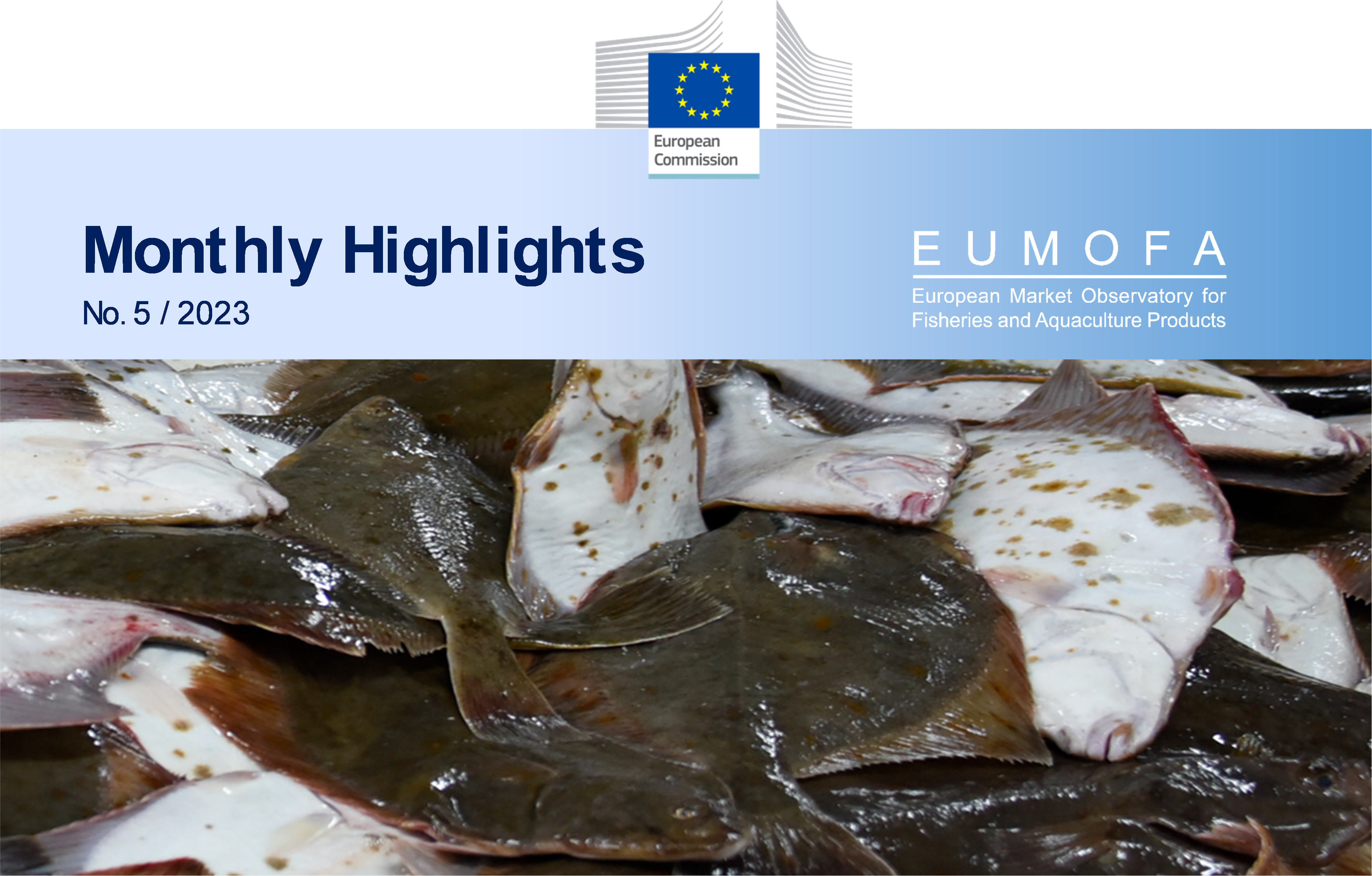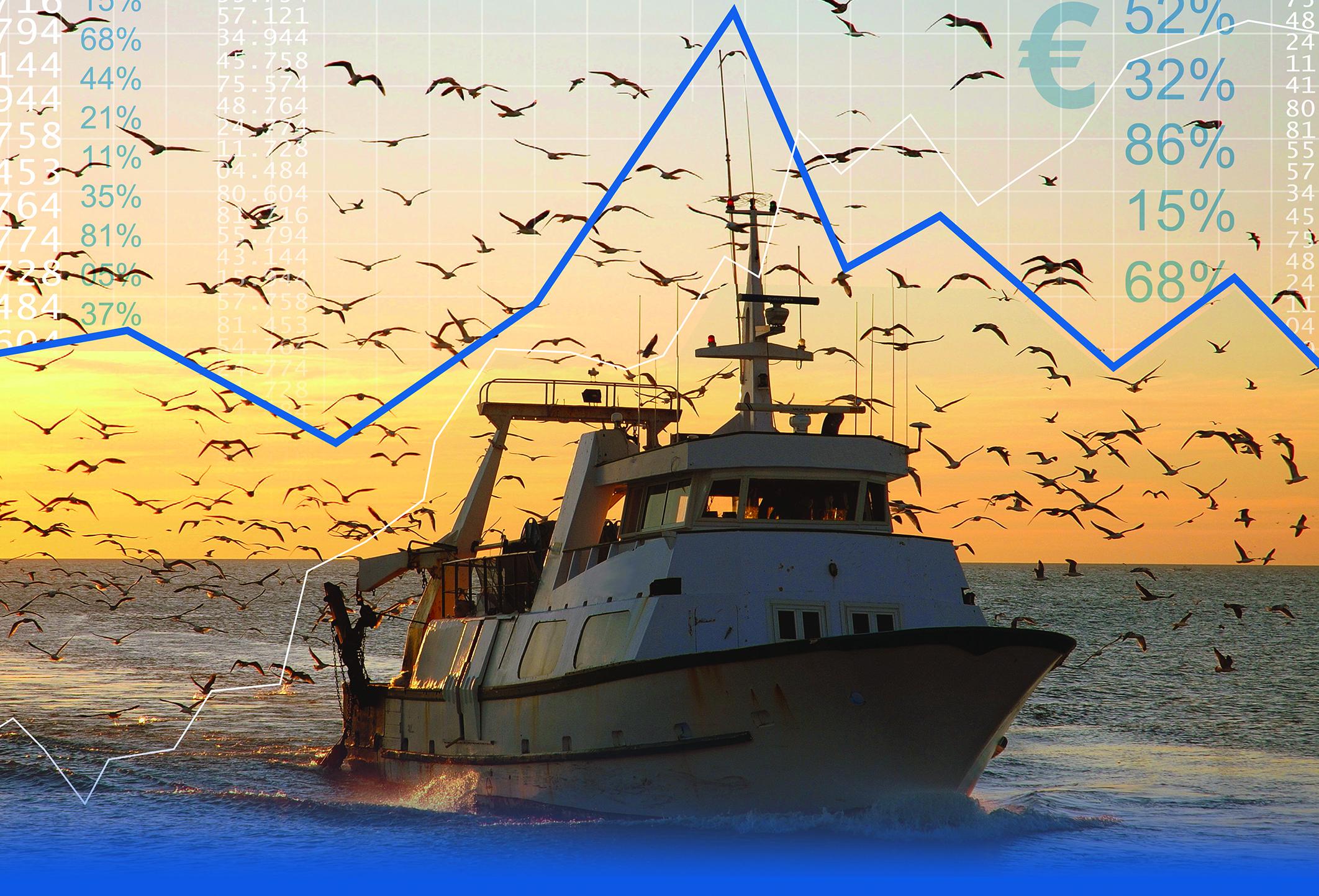News
EUMOFA Monthly Highlights No. 5/2023 is online
This month’s issue analyses first sales of turbot in France, the Netherlands and Portugal and wedge sole in France, Portugal and Spain. The case studies of this month are: “Inflation and price development for comparable protein sources” and “Blue whiting in the EU”.
FIRST SALES OF TURBOT AND WEDGE SOLE. Over the 36-month observation period from March 2020 to February 2023, the weighted average first-sales price of turbot in France was 18,87 EUR/kg, 73% higher than in Portugal (10,91 EUR/kg) and 7% higher than in the Netherlands (17,42 EUR/kg). During the observed period of March 2019 to February 2022, the weighted average first-sales price of wedge sole in Spain was 7,58 EUR/kg, 93% higher than in Portugal (3,98 EUR/kg), and 74% over the average price in France (4,40 EUR/kg).
EXTRA-EU IMPORTS. In 2023, price and volume of frozen lesser or Greenland halibut from Greenland showed a downward trend. Price ranged from 5,33 to 7,14 EUR/kg, and volume strongly fluctuated between 13 and 537 tonnes. The same year, price of frozen lobster from Canada exhibited a downward trend. Price ranged from 14,34 to 18,75 EUR/kg.
CONSUMPTION. In February 2023 compared to February 2022, household consumption of fresh fisheries and aquaculture products decreased in both volume and value in most of the Member States analysed. Highest decrease was observed in Denmark and Sweden. This month the focus is on consumption of European seabass in Italy, Portugal and Spain. Even though European seabass is one of the five most consumed fresh fisheries and aquaculture products in Italy and Spain, in the last 12 months a downward trend in consumed volumes and an upward trend in prices could be observed, also in Portugal, reaching a three-year peak of prices in all three countries.
The most recent weekly consumption data (up to week 16 of 2023) can be accessed on the EUMOFA website.
INFLATION AND PRICE DEVELOPMENT FOR COMPARABLE PROTEIN SOURCES. EU Member States are currently facing strong inflation, especially with respect to energy costs and foodstuffs. This can partly be explained by the recovery of the economy after the Covid-19 crisis and by the war in Ukraine, combined with extreme weather events in Europe in 2022, which affected livestock production in particular. According to Eurostat, the price of foodstuffs increased by 19,17% between March 2022 and March 2023. At retail level, consumer prices have been increasing strongly. The consequences of this may have been significant for household purchases where expensive animal protein products have been substituted by cheaper ones, and meat and fish products purchased less frequently.
BLUE WHITING IN THE EU. In 2021, catches of blue whiting in the EU amounted to 259.264 tonnes, the Netherlands, Denmark, Ireland and Germany being the main producing countries. The EU is a net exporter of blue whiting with a trade surplus of EUR 83 million in 2021. In 2021, 62% first sales in reporting countries occurred in Denmark 26% in the Netherlands and 10% in Spain. In 2022, the EU imported 56.749 tonnes of blue whiting at a value of EUR 17 million and exported 197.995 tonnes at a value of EUR 145 million, which resulted in a trade surplus of EUR 128 million. The main destinations for exports of blue whiting from the EU in 2022 were Nigeria (60% of total value), followed by China (11%) and Cameroon (8%).
MACROECONOMIC CONTEXT. Average prices for marine fuel in April 2023 ranged between 0,64 and 0,82 EUR/litre in ports in France, Italy, Spain and the UK. Prices decreased by an average of about 6,5% compared with the previous month, and decreased by an average of 25,8% compared with the same month in 2021.
Monthly Highlights no. 5/2023 is now available in English, French, and Spanish
 .
.
